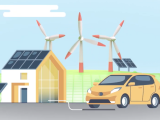
Modern Classic Car Restoration for Millennials: It’s Not Your Grandpa’s Hobby
November 10, 2025Let’s be honest. When you picture a classic car restoration, you probably imagine a retired baby boomer in a greasy garage, surrounded by cryptic tools and a project that’s been “almost done” for a decade. The smell of oil, the frustration of rusted bolts, the sheer, overwhelming mechanical complexity of it all.
Well, forget that image. A new generation is diving into the world of classic cars, and they’re doing it on their own terms. For millennials, restoration isn’t about escaping to the garage for solitude. It’s about connection, sustainability, and injecting a heavy dose of modern tech into timeless sheet metal.
Why Now? The Millennial Pull Toward Classics
So why, in an era of sleek Teslas and subscription services, are people in their 30s and 40s choosing to wrench on 40-year-old machines? The reasons are surprisingly… modern.
The Antidote to Digital Overload
We live our lives through screens. Our work, our social lives, our entertainment—it’s all pixels and notifications. Turning a wrench on a tangible, physical object provides a profound sense of accomplishment that no completed software ticket can ever match. It’s a form of active, hands-on meditation. You can’t Ctrl+Z a bolt you’ve just tightened; it’s a commitment.
Smart Sustainability (Or “Recycling with Horsepower”)
Millennials are a famously eco-conscious generation. And what’s more sustainable than saving a beautiful piece of engineering from the crusher? Restoring an existing car is the ultimate “reduce, reuse, recycle” project. You’re preserving history, reducing waste, and creating something unique—all while avoiding the massive carbon footprint of manufacturing a brand-new vehicle.
The Financial Angle: An Investment You Can Drive
Let’s talk money. The housing market is… challenging. The stock market feels volatile. But a well-chosen classic car? It can be a surprisingly solid asset. Unlike a new car that depreciates the second you drive it off the lot, a properly restored classic often appreciates in value. It’s an investment you can actually enjoy, tinker with, and show off.
The Modern Restoration Toolkit: Apps Over Chilton’s Manuals
Here’s where the millennial approach really diverges. The restoration process itself has been completely revolutionized by technology. The greasy manual is still there, but it’s now a digital co-pilot.
You know how it is. The old way meant hunting for parts in junkyards or waiting for a monthly catalog to arrive. The new way? It’s all about digital communities and on-demand manufacturing.
| The Old Way | The Millennial Way |
| Chilton’s/Haynes Manuals | YouTube tutorials, digital forums |
| Parts Swap Meets | Facebook Marketplace, dedicated online retailers |
| Phone Calls to Specialists | Instagram DMs to experts & 3D printing custom parts |
| Paper Trails & Receipts | Digital project logs, cloud-based budgeting apps |
Finding a rare trim piece for a ’78 Datsun used to be a years-long quest. Now, you post a “ISO” (in search of) in a dedicated subreddit or owners’ group on Facebook, and you might have three offers by lunchtime. It’s a game-changer.
Picking Your First Project: A Realistic Approach
Okay, you’re sold. But which car? The dream might be a ’67 Mustang, but the reality for a first-timer should be smarter. The goal is to finish the project and actually drive it, not have it become a permanent, rusting lawn ornament.
Here’s a quick, no-nonsense list of great starter classics for the modern restorer:
- 1980s Japanese Sports Cars: Think Nissan 300ZX, Toyota MR2, Mazda RX-7 (though be wary of the rotary engine complexity). Parts are becoming more available, and their values are shooting up.
- Fox Body Mustangs (1979-1993): Hugely popular, massive aftermarket support, and relatively simple to work on. A perfect V8 canvas.
- Volvo 240 Series: The brick. They’re tough, simple, incredibly charming, and have a cult following that borders on religious fervor.
- BMW E30 3 Series (1982-1994): The ultimate driving machine for a generation. A bit more complex, but the community support is absolutely unparalleled.
The key is to buy the most solid, rust-free body you can possibly afford. Mechanical issues are (usually) fixable. Rust, on the other hand, is a project-killing cancer. Trust me on this.
Blending Old and New: The “Resto-Mod” Philosophy
Purists might shudder, but the millennial restorer often embraces the “resto-mod” concept. This means keeping the classic, gorgeous exterior but subtly—or not so subtly—upgrading the internals for modern comfort and reliability.
We’re not talking about butchering a masterpiece. We’re talking about making it usable. Think about it: do you really want to drive cross-country in a car with vague steering, mushy brakes, and an engine that gets 12 miles to the gallon? Probably not.
Common, and honestly, brilliant upgrades include:
- Modern Sound Systems: Hidden Bluetooth headsets, custom speaker pods that don’t ruin the original aesthetics.
- Electronic Fuel Injection (EFI) Conversions: Say goodbye to finicky carburetors and hello to reliable starts in any weather.
- LED Lighting: Better visibility and a cooler look, all while drawing less power from the old electrical system.
- Updated Suspension and Brakes: This is a safety thing. Modern components can make an old car handle and stop like a new one, which is just… smart.
It’s a Social Project, Not a Solitary One
Perhaps the biggest shift is the community aspect. Your grandpa might have worked alone. You don’t have to. The entire process is now a shared, documented journey.
You’ll film your progress for TikTok or YouTube. You’ll post your latest victory—that finally freed bolt!—on Instagram. You’ll crowdsource solutions from forums when you’re stuck. The knowledge sharing is instantaneous and global. The frustration of a stuck part is mitigated by the ten people who immediately reply with “Hey, try this trick.”
This transforms the project from a lonely test of endurance into a collaborative, supported adventure. It’s the difference between reading a book alone and being in a vibrant, active book club.
The Road Ahead is a Rewarding One
Modern classic car restoration for millennials isn’t a rejection of the past. It’s a remix. It’s taking the soulful, analog experience of working with your hands and supercharging it with the tools and connectivity of the present.
It’s about creating something that has a story, a personality, and a connection to you that no off-the-lot vehicle can ever provide. In a world of mass-produced sameness, your restored classic is a defiant statement of individuality. A piece of history, reimagined through your own eyes, your own hands, and your own smartphone.
And that, you know, is a pretty cool thing to build.





